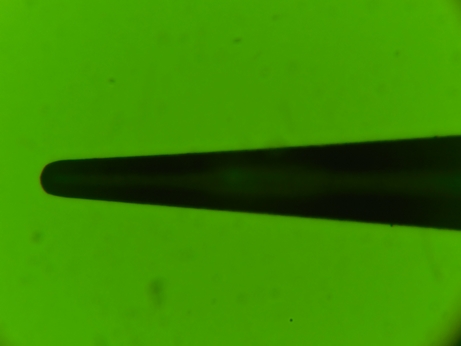What is the difference between etched and ground probes?
There are two common ways to manufacture the probe's taper and radius:
- Electrochemically etch
- Mechanically grind
Why is one method chosen over another?
- The base material is the driving reason:
- Tungsten, Tungsten rhenium are typically electrochemically etched
- Paliney® 7, beryllium copper, tungsten carbide, steel are generally mechanically ground materials
- Cost to manufacture:
- The cost to manufacture a mechanically ground probe is higher, so products that are price sensitive typically use electrochemically etched probes.
- The grinding process is approximately three to five times more expensive to create a probe. The smaller the radius or the shallower the angle, the higher the cost.
- Environmental issues:
- There are some materials like beryllium copper that can be either electrochemically etched or mechanically ground. Due to state and local EPA issues, one method might not be available or more cost effective to manufacture over the actual manufacturing cost itself.
- The final radius desired:
- Due to mechanical limitations, typically probes that are mechanically ground are not able to be uniformly manufactured to less than five microns.
- Due to Tungsten’s high melting temperature and unique properties, this allow radii of less than 100 nanometers to be formed.
- Desired shape and performance differences:
- The electronics industry has standardized typically on an electrochemically formed probe due to its ability to create a strong slightly convex taper. The etched taper has slightly more material reinforcing the final probe radius allowing a greater number of contacts without deforming or bending.
- Using the electrochemically etch method, there are options to create concave, straight to convex probes. It should be noted that this process is not able to create a “True Straight Taper” the way mechanically ground process can.
- On the materials that require mechanical grinding process, only a straight taper can be created. It’s typically not possible to create concave or convex shapes due to the process limitations. As this process creates a straight taper, the material leading up to the final radius will be substantially thinner than its etched counterpart.
- There is not cross correlation between a probe with the same model number in tungsten - which was etched - and its beryllium copper or Paliney® 7 ground counterpart. They will appear and perform substantially different. The etched version’s taper will have much more material behind the radius than a ground probe’s taper.
- Clients that have been using one material and style should consider these differences when switching to another. A model number of exactly the same specifications will not necessarily yield the same mechanical performance when changing to a different metal composition. Those that have been using etched tungsten with a 5 micron radius will find the Paliney® 7 material to be much softer and easily bent or “fish-hooked”. Those that have been using the ground products will find the etched tungsten to be much heavier. If in doubt, please consult our sales department to discuss your specific needs and requirements.
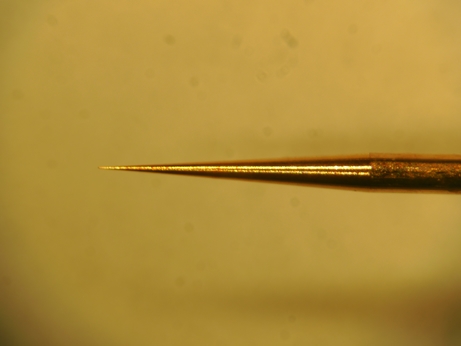 72BE-G3-70 (taper view) |
|
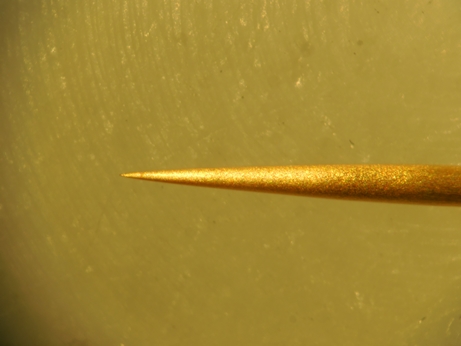 72T-G3-70 (taper view) |
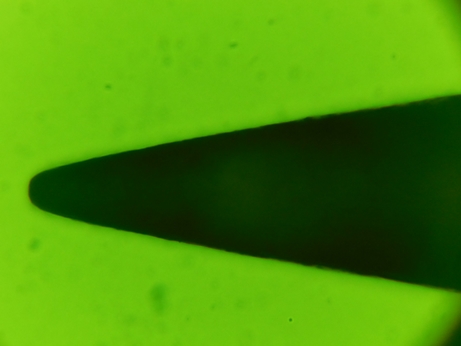 72T-G3-70 (radius view) |
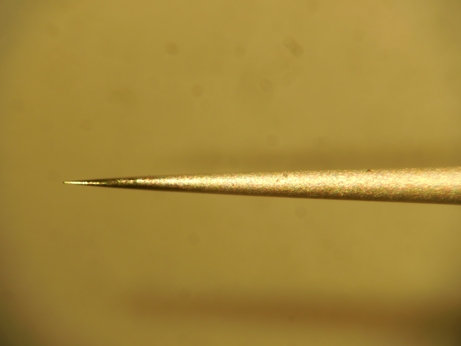 72T-J3-70 (taper view) |
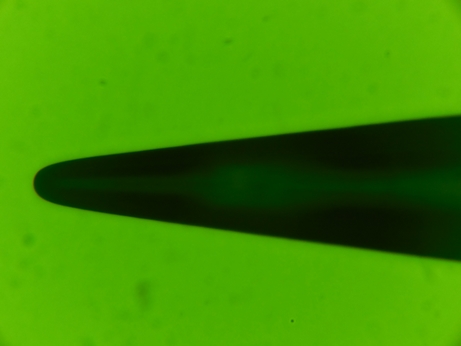 72T-J3-70 (radius view) |

